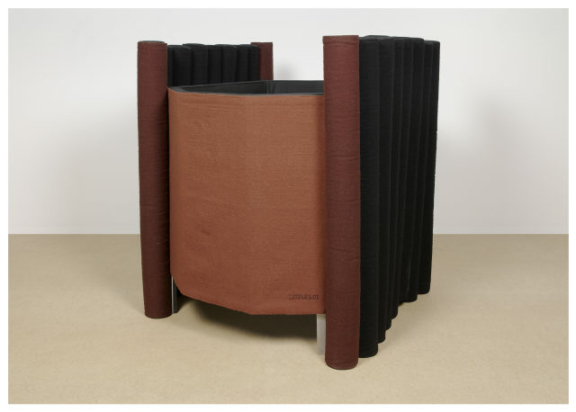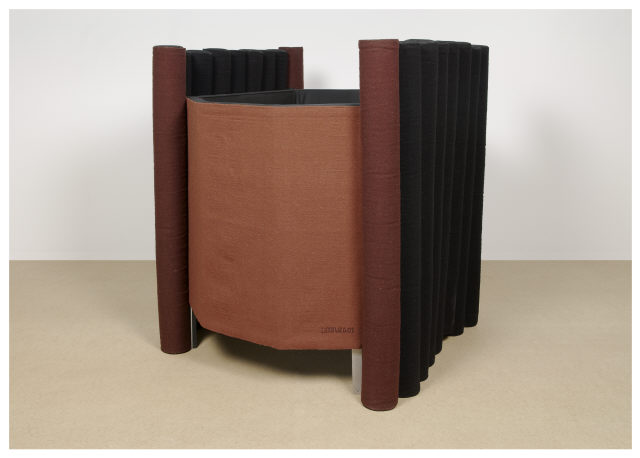
- 1984
- Fabric, Aluminum and Painted wood
- Inv. EE75
Luis Cienfuegos
Aljubarrota
Piece donated to CAM-Calouste Gulbenkian Foundation in 1985 – two years after the museum opened –, a date which marked six centuries since Portuguese and Spanish troops faced each other at the Battle of Aljubarrota (14 August 1385), where one of Luis Cienfuegos’ ancestors, Gutierre Bernaldo de Quirós, was killed. The pitched battle was a terrible defeat for the Spanish army, despite its greater numbers, with Portuguese victory being largely due to the use of palisades.
In a text sent at the time of the donation to CAM’s then director, Sommer Ribeiro, the art critic Kevin Power, author of ‘Cienfuegos: Tapestries’ (Istmo, 1985), added the subtitle ‘Homenagem aos Mortos’ [Homage to the Dead] to the title Aljubarrota, thus reinforcing the idea that the sculpture is a type of funerary monument and describing it as an allegory of the set-piece battle in the following terms:
‘Figuratively the central section represents both the battle-field and the pits used as traps to capture the animals, while metaphorically it symbolizes the void of death, the slide into nothingness. Its colour is that of the ground, the scorched earth, the soldier’s grave.
Flanking it on both sides are the dead soldiers. They form two compact and dramatic groups. Dark and silent, they cluster and hover around their burial-place. They appear like the pipes of a baroque organ and the mute deep sounds of their liturgy soar through the air’.
The colours are typical of the work of Cienfuegos, who sought to introduce a modern, abstract language into tapestry, asserting its independence from painting and stating that ‘to copy a painting in wool is an absurd task with negative results’ (in http://www.aache.com/alcarrians/cienfuegos-htm).
The colours used are the natural colours of sheep wool, black or white, or blends. For the lighter shades and golden shades in particular, Cienfuegos used an ancient Afghan technique of soaking the wool in goat’s urine. Similarly, the type of loom and technique used by the artist – that of French Gobelin tapestry – were traditional. In Aljubarrota the colours, black and chestnut brown, are also an evocation of the colours of Castile in the Middle Ages and once again Kevin Power provides essential context: ‘The two darker tones are used on the bodies of the soldiers, breaking the monotony of the black without destroying its harmony. This subtle variation also allows a slight minimal suggestion of movement in the overwhelming immobility of the mass. The dominant sensation is one of the silence, a grouping of dark figures around the grave…’
Isabel Carlos
March 2013
| Type | Value | Unit | Section |
| Height | 152 | cm | |
| Width | 152 | cm | |
| Depth | 130 | cm |
